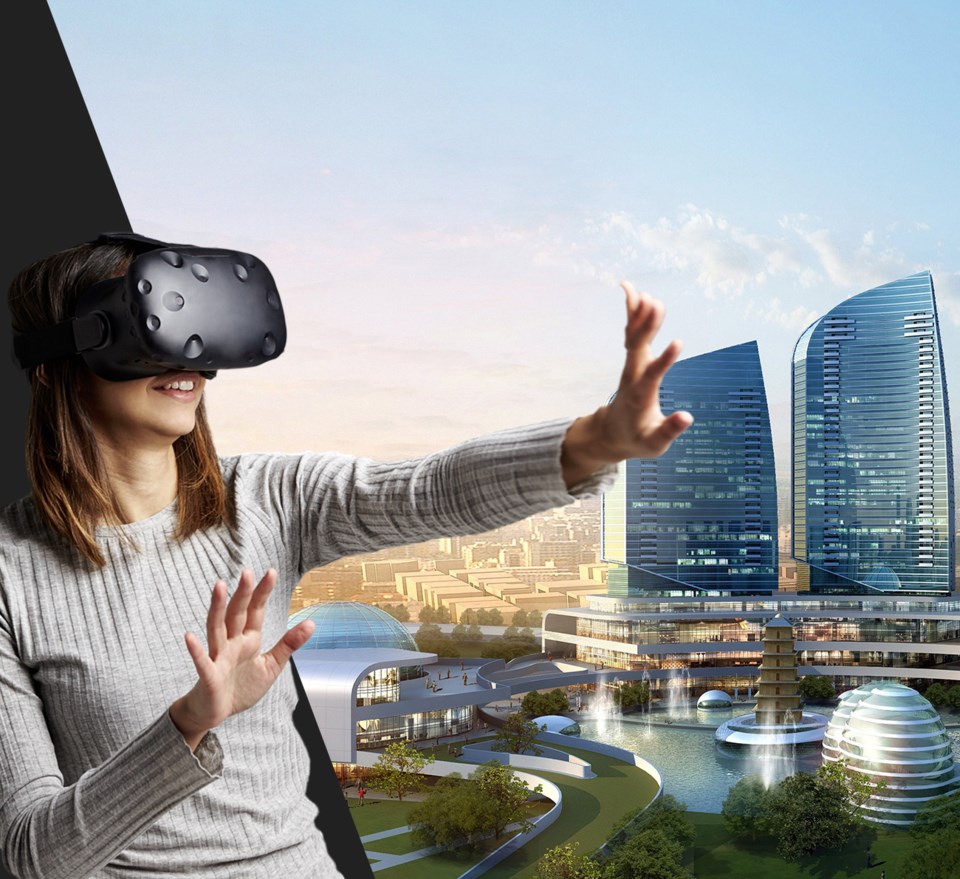Virtual reality is shaping the future of real estate

Saving on construction costs and creating realistic spaces that can be viewed and modified remotely opens a parallel dimension for design and sales
Peter Mitham Apr 29, 2022 4:58 PM
Remote work and online sales received a boost during the pandemic and led to changes in how real estate was sold. Virtual tours and remote signing became options for many buyers as the industry pivoted to address the new environment.
But for developers, the traditional display suite remains the cornerstone of sales efforts, providing a physical, tangible encounter with what a future home will be like.
“It’s proven. You can’t debate that it works,” said Hani Lammam, executive vice-president, Cressey Development Group, of traditional presentation suites. “My perspective is that this is such a big decision, you want to be able to touch it and feel it. This is a big investment for people.”
Cressey has never used virtual reality to sell homes, and Lammam doesn’t expect to use it while buyers are still wanting to tour presentation centres.
But since 2016, Stambol Studios of Vancouver has been creating virtual environments for developers from architectural plans to help buyers visualize and understand a potential purchase.
“We basically take [the architect’s plans], turn them into incredibly realistic renderings of the buildings with all the elements that make a building sellable,” said Dogu Taskiran, CEO of Stambol. “If they have a virtual reality headset attached to a mobile device or a computer, then they can get into these units and walk into them as if they are already built.”
Its clients include Etro Construction Ltd., for which it rendered the Turner Dairy project at 17th Avenue and Ontario Street in Vancouver. Visitors could don a VR headset and see what the townhomes planned for the site would look like even before the century-old dairy on the site was demolished.
Stambol also worked with Lark Group of Surrey to create a virtual experience within a job site trailer rather than build out a full presentation suite for an 18-unit condo development on Semiahmoo Spit in Blaine, Washington.
“They could also use the same material to send to their overseas investors or embed it on their website and then use it on social media,” Taskiran said. “One stone gets 50 birds, really.”
This is cost-effective, both because of the reach and the material costs involved. A single suite in a display centre can cost $250,000; building out and furnishing a full home can be many times more.
“Most developers spend up to $2 million to create that and it’s throw-away work, it’s not eco-friendly,” Taskiran said. “This, less than $50,000 will give you one three-bedroom apartment.”
The cost savings appeal to Joey Coupland, vice-president, sales with Wesgroup Properties LP, which uses augmented images to save on material costs.
“Building a presentation centre and a show suite is always expensive, so we’re always considering another option or another tool we could use to display our homes or our product,” she said.
Virtual staging – augmenting pictures of real homes with imagery of furniture – has been the most common practice to date.
“It’s significantly less than buying the furniture and staging [the home],” she says.
But when it comes to a full-on virtual option, she says the physical experience wins every time.
“It’s not the preferred experience we want to create for our homeowners, so we’re always building our show suites,” she said. “We see the benefit in the homeowners coming through and touching and feeling the materials, seeing the attention to detail.”
But as the technology evolves, project marketers like Ryan Lalonde see things changing. Stambol’s creation of virtual realities that people can enter in a presentation suite may well become the sort of environment people will experience from home. This could allow them to shop properties, allowing them to compare homes, or commercial space, without ever going to the physical site.
“Virtual reality is an immersive experience that is … going to unlock and remove some of the roadblocks and the hurdles that they feel in purchasing real estate,” he said.
Parallel reality
However, it could also create spaces people could inhabit parallel to real life, something he sees changing how people socialize. Rather than go to a restaurant or gather at home, people would enter a virtual restaurant space from their living rooms.
This is already the reality at Stambol Studios, where staff collaborate remotely through their headsets.
“Our entire team is actually doing virtual work, together, as if they’re in the same office,” Taskiran said. “You can turn right and talk to that person, turn left and talk to that person.”
On March 21, Stambol launched Order in Box, a marketplace for non-fungible tokens (NFTs) to handle trade in the digital certificates of ownership attached to such environments.
“You will be able to buy a virtual home, paying for it in cryptocurrency and get an NFT for it,” he said. “That will be your record of ownership, then you can get into it and live in it through virtual reality.”
The home’s furnishings and artwork would have NFTs, too. It could sit on virtual land represented by an NFT.
“People gathering around the same asset is what makes something valuable,” he said. “You build up value that way and I’ve known many developers who have virtual real estate now.”